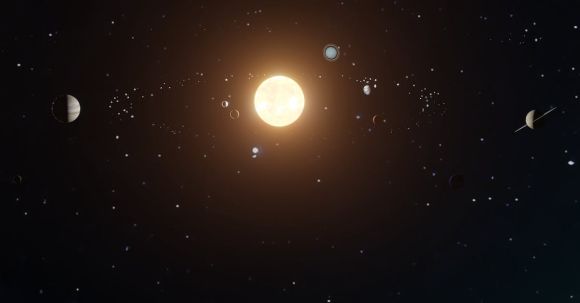The sun, our nearest star, is an incredible source of energy that plays a vital role in sustaining life on Earth. From providing light and heat to enabling photosynthesis, the sun’s energy is essential for the existence of all living organisms. In this article, we will explore the various ways in which the sun fuels life on our planet.
Harnessing Solar Energy: Photosynthesis
Photosynthesis is the process by which green plants, algae, and some bacteria convert sunlight into chemical energy to fuel their growth and survival. This remarkable process takes place in chloroplasts, specialized structures within plant cells. Chlorophyll, the pigment responsible for the green color of plants, captures sunlight and initiates the conversion of light energy into chemical energy.
During photosynthesis, plants absorb carbon dioxide from the atmosphere, release oxygen as a byproduct, and synthesize glucose, a simple sugar. Glucose is then used as an energy source for various metabolic processes within the plant. Ultimately, photosynthesis forms the foundation of the food chain, as it provides the energy necessary for the growth and development of all organisms that consume plants directly or indirectly.
Light and Heat: Essential for Survival
Apart from photosynthesis, the sun’s light and heat are critical for the survival of life on Earth. Sunlight regulates the Earth’s climate and is responsible for the processes of evaporation and precipitation, which drive the water cycle. It also plays a crucial role in the distribution of heat across the planet, influencing global weather patterns.
Furthermore, sunlight is essential for the production of vitamin D in humans. When our skin is exposed to sunlight, it synthesizes vitamin D, which is crucial for the absorption of calcium and the development of strong bones and teeth. Lack of sunlight can lead to vitamin D deficiency, resulting in health issues such as weakened immune function and increased risk of bone diseases like rickets.
Solar Energy: Powering the Planet
Solar energy is a clean and renewable source of power that has gained significant attention in recent years. Solar panels, also known as photovoltaic (PV) cells, convert sunlight directly into electricity. These panels consist of semiconductor materials that absorb photons from the sun and generate an electric current.
As the demand for sustainable energy grows, solar power is becoming an increasingly popular alternative to traditional fossil fuels. Solar farms and residential solar installations help reduce the reliance on non-renewable energy sources, mitigating the environmental impact of electricity generation.
The Sun’s Role in Climate Change
The sun also plays a role in climate change, although its impact is relatively minor compared to human activities. Solar radiation levels vary over time due to natural phenomena like sunspots and solar flares. These variations can influence the Earth’s climate, causing slight fluctuations in temperature.
However, the current climate change crisis is primarily driven by human activities, such as the burning of fossil fuels and deforestation, which release greenhouse gases into the atmosphere. These gases trap heat, leading to a rise in global temperatures and disrupting ecosystems worldwide.
In Conclusion: The Sun, a Vital Source of Life
The sun is undeniably the powerhouse that fuels life on Earth. Through photosynthesis, it provides the energy required for the growth and survival of plants and, consequently, all other organisms. Its light and heat regulate our climate, enable vitamin D production in humans, and power solar energy technologies. While the sun’s natural variations can have a minor impact on our climate, the current climate change crisis is primarily driven by human activities. As stewards of this planet, it is crucial that we recognize the sun’s significance and work towards sustainable practices to protect our environment and ensure a thriving future for all life on Earth.





